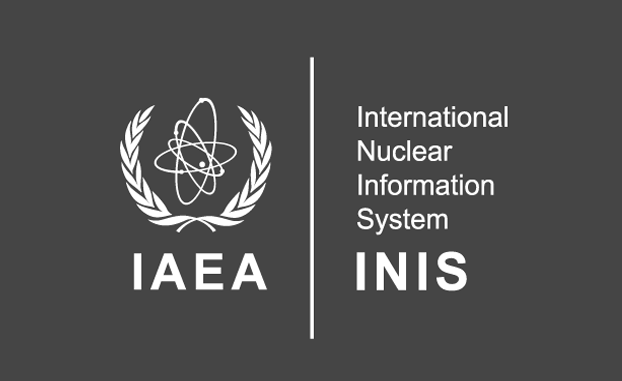Submissions
Submission Preparation Checklist
As part of the submission process, authors are required to check off their submission's compliance with all of the following items, and submissions may be returned to authors that do not adhere to these guidelines.- Naskah belum pernah diterbitkan sebelumnya, dan tidak sedang dalam pertimbangan untuk diterbitkan di jurnal lain (atau sudah dijelaskan dalam Komentar kepada Editor).
- File naskah dalam format dokumen OpenOffice, Microsoft Word, atau RTF.
- Referensi yang dapat diakses online telah dituliskan URL-nya.
- Naskah diketik dengan teks 1 spasi; font 12; menggunakan huruf miring, bukan huruf bergaris bawah (kecuali alamat URL); dan semua ilustrasi, gambar, dan tabel diletakkan dalam teks pada tempat yang diharapkan, bukan dikelompokkan tersendiri di akhir naskah.
- Naskah mengikuti aturan gaya selingkung dan bibliografi yang disyaratkan dalam Panduan Penulis.
Copyright Notice
Author Rights
We require authors to transfer non-exclusive publishing rights to the publisher to enable BRIN Publishing to publish and distribute research articles. This rights transfer is established through a publishing agreement between the authors and BRIN Publishing. The agreement explicitly addresses the transfer or licensing of copyright for publishing purposes to BRIN Publishing, while authors maintain the necessary rights to utilize and share their published articles. BRIN Publishing fully supports authors in sharing, disseminating, and maximizing the impact of their research, including within any databases.
As an author publishing in Urania, you possess a broad range of rights for various article uses, including within your institute or company. These author rights can be exercised without the requirement of obtaining explicit permission. When publishing in Urania, authors enjoy extensive rights to utilize their works for educational and scholarly purposes, eliminating the need to seek permission (but it should follow the open access license of Creative Common CC-by-SA License) include :
- The author or the author's institution can freely employ the article for classroom teaching purposes and present it at meetings or conferences. Additionally, copies of the article can be distributed to the attendees without any hindrance
- The author's company can utilize the article for internal training purposes without any restrictions
- Shared with colleagues for their research purposes
- Incorporated into a future compilation of the author's works
- Include in a thesis or dissertation without any limitations
- Portions or extracts from the article can be reused in other works as long as proper acknowledgment of the original article is provided
- Derivative works can be prepared based on the article, excluding commercial purposes, as long as proper acknowledgment of the original article is given
- The author or the author's institution can voluntarily post the article on open web sites for scholarly purposes
Authors, readers, and third parties can copy and distribute the material in any medium or format. They can also remix, transform, and build upon the material for any purpose, including commercial purposes. However, it is essential to give appropriate credit by mentioning the name of the creator and attribution parties (including the authors' detailed information). A copyright notice, an open-access license notice, a disclaimer notice, and a link to the material should also be provided. Moreover, a link to the license and an indication of any changes made must be included. The publisher should indicate any modifications to the material and retain a record of previous modifications using a CrossMark Policy. Furthermore, information regarding Erratum-Corrigendum notification should also be provided.
Authors, readers, and third parties have the freedom to access, read, print, and download the article. They can also redistribute or republish it by displaying it in a repository. Additionally, they can translate the article, download it for text and data mining purposes, reuse portions or extracts from it in other works, sell or reuse it for commercial purposes, and remix, transform, or build upon the material. They must distribute their contributions under the same license as the original Creative Commons Attribution-ShareAlike (CC BY-SA) license.
Publishing Right
By submitting a manuscript, the authors acknowledge and agree that, if accepted for publication, the article's non-exclusive right for publishing (publishing right) shall be assigned or transferred to the Publisher of Urania journal (BRIN Publishing).
Once an article is accepted, authors will receive a notification email, including a 'Copyright Transfer Agreement for Publishing' form. This form, known as the CTAP (Copyright Transfer Agreement for Publishing), needs to be completed by the authors. The agreement can be conveniently accessed online.
Urania journal and BRIN Publishing, along with the Editors and the Editorial Board, are committed to upholding the highest standards to prevent the publication of incorrect or misleading data, opinions, or statements in the journal. However, it is essential to note that the authors and advertisers hold the sole and exclusive responsibility for the content of the articles and advertisements published in Uraniajournal.
It is important to remember that while we request a transfer of copyright for publishing through the CTAP, our journal ensures that the authors retain (or are granted back) significant scholarly rights, as mentioned earlier.
The form of Copyright Transfer Agreement for Publishing (CTAP)can be downloaded here : [CTAP Form of Urania]
Privacy Statement
The names and email addresses entered in this journal site will be used exclusively for the stated purposes of this journal and will not be made available for any other purpose or to any other party.


